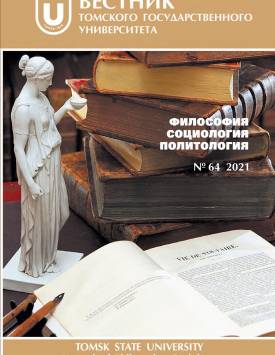Wittgenstein’s Unaussprechliches: What Cannot Be Said Cannot Be Said Clearly
The article argues that the clarity of linguistic terms that Ludwig Wittgenstein talks about in Tractatus (‘...what can be said at all can be said clearly...’) does not depend on understanding their meaning, but it has in fact an optical nature. It is assumed to be related to the action of the sign, where the production of meaning becomes possible only in company with other signs. Meaning here plays the role of a regulator of the coherence for signs in order that some factuality (eventuality) takes place (or not). In the very action of the sign, its optical properties are revealed - it displays other signs in itself and is simultaneously displayed in them. This malleability and plasticity of the sign is due to its sensually perceived nature. The optical action of the sign creates a symbolic field, which assumes the role of a meaning conductor. The symbolic emerges as something generic, as the moment when the sign is linked to the rules of logical syntax (otherwise, the arbitrariness of the sign would not allow language to be filled with meaning). It is an expression of agreement to follow a certain attitude (or rule). What matters, however, is not so much the grasping of the content of this attitude per se, but rather the way in which we grasp it - because that is how we follow a rule, not in any other way. And here Wittgenstein’s ‘spade’ bends under the heavy burden of grounds, finally reaching ‘bedrock’ and forcing us to say, ‘This is simply what I do’ (PI, § 217). For Wittgenstein, the role of such ‘bedrock’ is played by the symbol, which blocks any possibility of its own linguistic expression by the usual means of articulation. The reason for this is the symbol’s absolute indifference to its own meaning, the symbol describes only itself, increasing the importance of what is symbolized. This mechanism of ‘seeing’ the symbol into itself while preserving the obscurity of meaning and simultaneously demanding the clarity of what is eventuating, gives us actual manifestations of the optical nature of the symbol. The optical triggers the function of symbolization by implicitly influencing our sensibility. The optical focusing (gathering) of our sensibility into a single focus enables the symbol to express its instinctive powers, thus making them obvious to us. The gaps between the binding and destructive powers of symbolization are revealed by differentiation and demarcation of these instinctive powers. The optical possibilities of the symbol open in the sign a capacity to distinguish objects in a special way, where ‘seeing’ does not mean ‘understanding’ or ‘describing’ but only ‘making visible’; and ‘making visible’ also means seeing.
Keywords
Wittgenstein, optical, seeing, showing, sign, symbolAuthors
| Name | Organization | |
| Nekhaeva Iraida N. | Tyumen State University | i.n.nekhaeva@utmn.ru |
References

Wittgenstein’s Unaussprechliches: What Cannot Be Said Cannot Be Said Clearly | Tomsk State University Journal of Philosophy, Sociology and Political Science. 2021. № 64. DOI: 10.17223/1998863X/64/6
